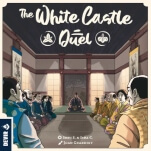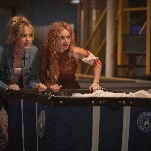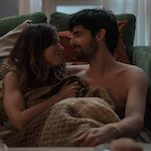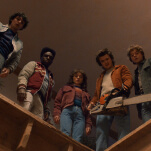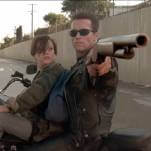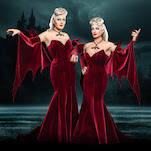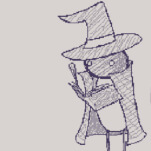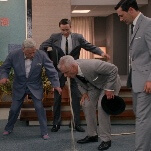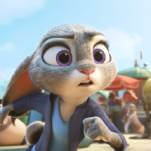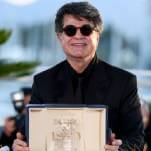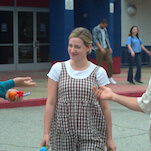A Christmas Story stayed on the kid side of a coming-of-age book

Jean Shepherd’s In God We Trust: All Others Pay Cash (1966) and Bob Clark’s A Christmas Story (1983)
Christmas is the day “around which the entire kid year revolved,” the writer and radio personality Jean Shepherd correctly notes, which is why it’s surprising that few works of art have captured that sense of anticipation. A lot of holiday movies feature young protagonists, but outside of A Christmas Story—co-written by Shepherd, and based on his writings—almost none tell a natural story (that is, sans a supernatural or other high-concept element) about how December gets more and more intoxicating as the 25th approaches.
A Christmas Story is mostly pulled from four pieces in Shepherd’s story collection In God We Trust: All Others Pay Cash, and three of the four come from early on in the book, which is gently structured around the growing maturity of Ralphie Parker, a narrator who can be viewed as a Shepherd surrogate. Director Bob Clark, who also made that other holiday staple, the slasher Black Christmas, was smart enough to trust that a kid’s anticipation of Christmas would be drama enough, and that any kind of character epiphany or narrative arc would be superfluous. (Including such an arc is one of the many mistakes made by A Christmas Story 2, a terrible cash-grab sequel.) By avoiding the second half of the book, which charts Ralphie’s growing awareness of adult issues and the problems other people face, Clark keeps his focus purely on what the season is like for an average kid. The only lesson to be learned from Shepherd’s Christmas is that getting gifts is fun and that kids are goofy. Leave the more profound morals to that other adolescent standard: the summer after which nothing was ever the same.
In God We Trust’s chapters alternate between a modern section, where an adult Ralphie returns to his hometown and reminisces with a childhood friend, and ones that recount those memories. While the book is listed as fiction—Shepherd says any resemblance to reality was “purely coincidental, accidental, or the result of faulty imagination”—it’s clearly drawn from his own experiences. Some of the details were likely invented or exaggerated, but the verifiable changes barely qualify as tweaks. (Shepherd grew up in Hammond, Indiana, which here becomes Hohman, a fictitious setting in the same geographic location.) It seems fair to say that if something didn’t happen to Shepherd himself, a version of it happened to someone he knew.
The first memory recounted in the book is the one that makes up the framework of the film; its worldview is 100 percent from the perspective of a child. The story is about Ralphie’s desire for a BB gun for Christmas (a Daisy Red Ryder 200-shot carbine-action gun, “as cool and deadly a piece of weaponry as I had ever laid eyes on”), and his attempts to navigate the skepticism of adults who assure him, “You’ll shoot your eye out.” Shepherd never warmed to this point of view; in the book, the memory is spurred by a woman wearing a “disarm the toy industry” button, a cause adult Ralphie rolls his eyes at. “A Vegetarian type,” he snarks. “No doubt also a dedicated Cat Fancier.”
The collection’s final story, which bookends the gentle materialism of the first, is about the hardships Hohman faced during the Depression. Specifically, the desperation that ensues when a movie theater offers various promotions to draw in business, including a lottery where winning “meant the difference between actual Life and gnawing, grubbing, penny-scrabbling, bare Existence.” This story, while still comic thanks to the narrator recounting the events from a distance, is probably closer to 50-percent adult in its awareness of the world. A version of it appears in My Summer Story, a.k.a. It Runs In The Family, Clark’s kinda-sequel to A Christmas Story that adapts other Shepherd stories. Pointedly, that film ends with the tale Shepherd credits with his first feeling like an adult, joining his dad and dad’s friends for a round of dirty jokes after a successful day of fishing.
In contrast, the chapters that compose A Christmas Story’s subplots—Ralphie’s cynicism after a secret radio message turns out to be a commercial, the tension between his parents after his dad wins an erotically shaped lamp that gets mysteriously destroyed— scarcely crack 15-percent adult. Even the story of Ralphie snapping and fighting the neighborhood bully is more about him fretting that he’ll get in trouble for fighting than it is his discovery of his animal fury. (Another subplot, about the neighborhood dogs that terrorize Ralphie’s Old Man, was taken from Shepherd’s collection, Wanda Hickey’s Night Of Golden Memories: And Other Disasters.)
Keeping the storylines so kid-focused doesn’t mean the story is childish or low stakes. On the contrary, the book and movie draw most of their humor from the contrast between how high the stakes are for Ralphie, and how low they are for the rest of us, looking back on childhood with years of perspective. That thematic perspective is especially pronounced in the film, where Shepherd—who narrates and is credited as Ralphie as an adult—gets far more dialogue than his childhood equivalent (played by Peter Billingsley), clearly aligning us with his point of view, as opposed to young Ralphie’s.







